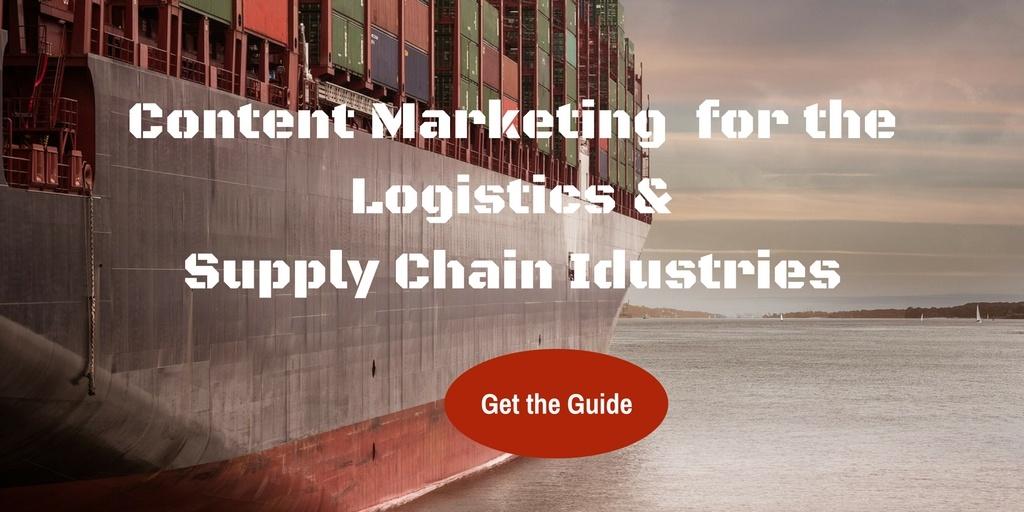
by Fronetics | Dec 19, 2018 | Blog, Content Marketing, Leadership, Logistics, Marketing, Supply Chain
Our most-viewed leadership posts from this year discuss the characteristics of effective leadership, point out industry trends, and provide resources for leadership growth.
Our top leadership posts from 2018 examine what makes a good leader, as well as what makes a bad leader, and the ramifications of each. They also look at some executive thought leadership about industry trends, notably corporate social responsibility, and talk about how supply chain leaders can make use of social media.
Here are our top 5 leadership posts from 2018.
Fronetics’ top 5 leadership posts of 2018
1. Why CSR: Four Benefits of Corporate Social Responsibility
Corporate social responsibility is a pretty broad term to describe how a company is working to improve its community. And 55% of consumers are willing to pay more for products from socially responsible companies. What does that mean for you? It means that corporate social responsibility is as good for your community as it is for your own brand. Here are four major benefits of corporate social responsibility. Read more.
[bctt tweet=”55% of consumers are willing to pay more for products from socially responsible companies. What does that mean for you? It means that corporate social responsibility is as good for your community as it is for your own brand. ” username=”Fronetics”]
2. 5 Must-Read Books for Supply Chain Leaders
Great leaders embody the ability to inspire and empower their teams to succeed. Here are five books that we recommend reading to keep getting the job done: empowering your team, learning about industry trends, updating your management practices, and other key insights. Read more.
3. 5 Social Media Tips for Supply Chain Executives
Supply Chain Management and its related functions (Procurement, Planning, Vendor Management, Logistics, Operations) are on the opposite end of the spectrum from functions like sales and marketing – areas where your brand is everything. But from our perspective, there are still lots of different benefits that Supply Chain and Procurement executives can gain from building their social media brands. Read more.
4. What’s the Cost of Bad Leadership in Procurement?
Everyone knows that a bad hire can be really costly to a business. When you account for hiring, training, and onboarding costs, plus the opportunity cost of not hiring a successful employee – not to mention the impact on workplace culture – hiring the wrong person can set a company back tens of thousands of dollars. Read more.
5. Supply Chain Leaders: Do These 4 Things with Your Social Media
We’ve written many times before about the importance of supply chain leaders being on social media as the face of their brands. Social media presents a huge opportunity for executives to use their relative industry celebrity to be an extension of their organizations. So you are ready to commit to a more active social media presence (or you’re going to be ghost-posting for your executive). Where do you begin? We’ve come up with 4 tips for supply chain leaders to making the most of their presence on social media. Read more.
Related posts:


by Fronetics | Dec 18, 2018 | Blog, Content Marketing, Logistics, Marketing, Supply Chain
Aligning sales and marketing can help achieve big-picture goals. Here are the top five sales and marketing posts of 2018 that highlight how these two teams can work together.
The sales process is often a complicated journey that includes uphill climbs and unexpected roadblocks. Sales teams are all too familiar with these obstacles, but they don’t have to fight these battles alone.
Arm a sales rep with targeted content to share with prospects during specific moments in the purchasing process, and it will build his or her reputation as a knowledgeable resource. That can be the key to getting a foot in the door, advancing through the final stages of a purchasers’ decision, or closing the deal.
[bctt tweet=”Arm a sales rep with targeted content to share with prospects during specific moments in the purchasing process, and it will build his or her reputation as a knowledgeable resource. ” username=”Fronetics”]
Strong communication between sales and marketing can help create better content and nurture leads. Here are our top five sales and marketing posts of 2018.
Top 5 sales and marketing posts 2018
1. Infographic: the B2B Buyer’s Journey
Technology has completely changed the B2B buyer’s journey. The vast amount of information available on the internet has afforded buyers a level of self-sufficiency that renders traditional sales models ineffective. Marketers must leverage the latest trends and technologies to boost their content marketing efforts and turn leads into sales. Here are nine factors affecting today’s B2B buying journey. Read full post
2. Infographic: How Digital Natives are Changing B2B Purchasing
Long gone are the days of men and women sitting around a conference table listening to a sales pitch over a free lunch. Today’s B2B buyers are younger, more technologically savvy, and more independent — they’re a generation of digital natives. And they’re making waves across the B2B buying landscape and changing how marketers must work to reach new customers. Here’s what you need to know about the new B2B buyer. Read full post
3. The 3 Most Important Sources of Information for B2B Buyers
From a content marketing perspective, knowing where your buyers get their information is critical to an effective strategy. So what are most important sources of information for today’s B2B buyers? 20 years ago, you might have named things like product info sheets or sales reps. But not anymore. Read full post
4. 3 Dangers of Sales and Marketing Misalignment
Too often, B2B companies fall victim to the dangers of sales and marketing misalignment, often without even being aware that it’s an issue. Such misalignment can have serious motivational and financial consequences. These are the major dangers of sales and marketing misalignment compared to what can happen when things go right. Read full post
5. Infographic: Delivering Content Throughout the Buyer’s Journey to Help Your Sales Team Close Deals
If you’re a supply chain marketing professional, it’s likely that you spend a tremendous portion of your day researching, creating, packaging, and disseminating content. It’s time to start leveraging your it throughout the buyer’s journey by arming your sales force with content. Before you panic at the idea of creating reams of new content, take a breath. It’s more than likely that you can repurpose your existing content, optimized to give your sales force the tools they need to close deals.Read full post
Related posts:


by Fronetics | Dec 13, 2018 | Blog, Content Marketing, Logistics, Marketing, Supply Chain
These are the top 10 most-viewed supply chain and logistics posts of 2018.
Our goal throughout the year is to provide our readers with the latest news and happenings in the supply chain and logistics industry, with a focus on content marketing. We hope to educate and enlighten our readers with industry insight, tips, and trends to stay ahead of the competition.
This year we’ve taken a deeper look at supply chain and logistics companies that have experienced the highs (Google, Amazon) and lows (Tesla, KFC) of running supply chain and logistics businesses. These posts have highlighted how we can all learn a thing (or two) from their accomplishments and, of course, their mistakes.
[bctt tweet=”This year we’ve taken a deeper look at supply chain and logistics companies that have experienced the highs (Google, Amazon) and lows (Tesla, KFC) of running supply chain and logistics businesses. These posts have highlighted how we can all learn a thing (or two) from their accomplishments and, of course, their mistakes.” username=”Fronetics”]
Here’s a look at our most popular supply chain and logistics posts this year.
Top 10 supply chain and logistics posts in 2018
1. 10 Must-Follow Supply Chain and Logistics Blogs in 2018
What are your favorite supply chain and logistics blogs? Fronetics wants to tell you about some of our favorite blogs that we follow. Read full post
2. Drawing Lessons from Tesla’s Supply Chain Issues
This guest post from Argentus Supply Chain Recruiting examines Tesla’s recent supply chain woes. Argentus also shares the biggest takeaways to help you prevent similar blunders. Read full post
3. Top 3 Logistics and Supply Chain Blogs of 2018
We love hearing what blogs you enjoy reading and find valuable. There are lots of great industry options, so we know it’s not easy to narrow down your favorites. We had lots of great responses, but only Women in Trucking held its spot on our list of the top logistics and supply chain blogs from last year. Read full post
4. KFC Ran Out of Chicken in the UK: What Supply Chain Lessons Can We Learn?
There’s another unfortunate entry in the annals of Supply Chain failures that burst into the wider world of business and pop culture: More than half of the UK’s Kentucky Fried Chicken stores closed because they ran out of chicken this year. Argentus Supply Chain Recruiting examines the lessons we can learn from the restaurant chain’s blunder. Read full post
5. How Google Does Supplier Diversity
In 2014, Google launched a supplier diversity program to ensure that its staff had the ability to search large and small vendors when purchasing products or services. The tool it developed has helped Google employees create relationships with small businesses, defined as U.S.-based companies with $15 million or less in annual revenue and 50 or fewer employees. Google felt these companies often have a specialized and innovative product or service but might never be discovered simply because of their size. Read full post
6. Infographic: Influencer Marketing and the Supply Chain
Influencer marketing is a form of marketing in which marketers identify individuals that have influence over potential buyers and create marketing campaigns and activities around these influencers. Why is this so effective? Because buyers trust influencers talking about your products and services more than they trust you talking about yourself. Read full post
7. Valentine’s 2018 Supply Chain Infographic
Consumers spent a near-record $19.2 billion on Valentine’s Day 2018, up from $18.2 billion in 2017. According to NRF’s annual survey, over half of the country participated (55%) in the romantic holiday, spending just over $140 on average. Read full post
8. Five Go-To Supply Chain Websites
Following leading websites is a great way to keep up with the latest news and information about happenings in the supply chain and logistics industry. Here are our five favorite supply chain websites. Read full post
9. Video: Why Inbound Marketing is Better than Outbound Marketing for Supply Chain Marketers
Marketers are constantly coming up with new and trendy ways to attract leads. With endless platforms available to us, it can be overwhelming for even the most seasoned marketers to know where they need to focus their efforts. Outbound marketing used to be the ‘go to’ for generating leads, but this is simply no longer the case. Marketers across industries have found that inbound marketing has many advantages over traditional marketing practices. Read full post
10. 5 Email Marketing Trends Supply Chain and Logistics Marketers Need to Know
More people are using email than ever before (close to 3.8 billion worldwide). Fronetics works with supply chain and logistics businesses every day, so we have a first-hand understanding of how email marketing can be successful in these industries. Read full post
Related posts:


by Fronetics | Dec 12, 2018 | Blog, Content Marketing, Logistics, Marketing, Social Media, Supply Chain
Our most-viewed social media posts confirm there’s only one thing that stays the same with social platforms: they’re always changing.
Today, more than ever, companies are turning to social media to engage with customers and reach new audiences. But staying current with updates and new technologies is no easy task for marketers.
2018 was the year of video. From the soaring popularity of Insta Stories and Snapchat to the continued success of YouTube, users want to watch content (over reading it). In fact, video is the most popular form of content being consumed online today — and it shows no sign of slowing down.
[bctt tweet=” From the soaring popularity of Insta Stories and Snapchat to the continued success of YouTube, users want to watch content (over reading it). In fact, video is the most popular form of content being consumed online today — and it shows no sign of slowing down.” username=”Fronetics”]
Here are the top 10 social media posts in 2018, including why (and how ) to start implementing video into your content marketing strategy.
Top 10 social media posts in 2018
1. 10 Social Media Statistics for B2B Marketers 2018
Social Media Examiner’s 10th annual study, 2018 Social Media Marketing Industry Report, surveyed more than 5,700 marketers from across the world in a variety of industries — including manufacturing, industrial goods, and a variety of other B2B verticals. Here are some of the most relevant social media statistics from that survey for supply chain and logistics marketers. Read full post
2. An Example of Successful Social Media in Supply Chain Management
Sometimes, a success story can be a powerful motivator. FIFA and Adidas have been extremely successful in using social media in supply chain management. Here’s how it works for these organizations and why your business should consider it. Read full post
3. 10 Tips for Using Instagram for Business
Recent research on social media use shows that 66% of brands now use Instagram. It’s the second-most used platform by businesses, up from fourth in 2017. If you’re considering using Instagram for your business, which you should be, here are some tips for getting started. Read full post
4. Video: Social Media Trends for 2018
As always, good content will be as important as ever. With over one million new-data-producing social media users each day, high-quality content is the only way to stand out from the masses. But we also think you should pay attention to a few social media trends that we have highlighted in the following video. We’re certainly planning to adjust our strategy and those of our clients to consider these things. Read full post
5. 4 Things Your Business Should Do in Light of Facebook News Feed Changes
Mark Zuckerberg once again rocked the world on January 11 — at least for businesses — when he announced that Facebook News Feed was evolving to include less public content, meaning content from Pages of businesses, brands, and media. The algorithm now prioritizes posts from friends and family (over public posts) and those that “spark conversations and meaningful interactions between people.” Here’s how you should change what you’re doing in response. Read full post
6. Infographic: Social Media Statistics Your Business Needs to Consider When Publishing Content
A strong social media presence is key to successful marketing in 2018. Social media is simply unavoidable these days. So, you jumped on board and you’re posting and tweeting. You’re creating content. You’re learning about search engine optimization and how to improve your rankings. But you’re still not reaching the audiences you were hoping to attract. What’s going wrong? Read full post
7. What Supply Chain and Logistics Marketers Need to Know About Organic Reach on Facebook
In a recent social media news post, we mentioned that Facebook was experimenting with an Explore Feed feature. You may or may not have heard about how this might affect businesses’ ability to achieve organic reach on Facebook. Read full post
8. Facebook Boosts Local News, Twitter Launches Sponsored Moments, and More Social Media News
Updates to the most popular sites have included longer character counts, more advanced conversational skills with chatbots, and new tools for easier sharing. All of these changes are working to improve user experience and help keep users active on the biggest sites. Read full post
9. Facebook Updates News Feed, Instagram Allows User to Send Live Videos, and More Social Media News
I’m sure by now you have heard about the updates to Facebook’s News Feed that are having major impacts on business pages’ organic reach. But the changes don’t stop there. Twitter, Snapchat, and Instagram are trying to follow Facebook’s lead and enhance their user experience. Through updates that include video counts, enhanced data collection, and recommended posts, social media is working overtime to make sure its active users are staying active. Read full post
10. 5 Ways to Improve Your YouTube Marketing Strategy
I’ve written a lot about YouTube and how the supply chain should be leveraging it as a marketing tool. Of course, I don’t recommend just creating videos at random and throwing them up on your channel. Like any content or platform, you should approach YouTube strategically. Read full post
Related posts:


by Fronetics | Dec 11, 2018 | Blog, Content Marketing, Logistics, Marketing, Supply Chain
Our most-viewed content marketing posts indicate that marketers are seeking solutions to improve their content marketing programs.
Supply chain and logistics marketers have seen the benefits (and successes) of content marketing. It is the most cost-effective method to earn leads and sales. Why? Because content marketing focuses on the way B2B byers are making purchases, finding and evaluating content through online searches.
[bctt tweet=”Content marketing focuses on the way B2B byers are making purchases, finding and evaluating content through online searches.” username=”Fronetics”]
There is a trend with our most-viewed content marketing posts this year: innovative ways to improve content marketing strategies. From increasing brand awareness to improving SEO, marketers are looking to get their content in front of the right audiences.
Here’s a look at our top content marketing posts from this past year, all focused on industry trends and ways to improve your content marketing strategy.
Top 10 content marketing posts in 2018
1. B2B Marketing Trend 2018: Influencer Marketing
You’ve probably heard the buzzword by now: Influencer marketing seems to be on the tip of every marketer’s tongue these days. But the reality is that B2B marketers have been slow to adopt this new marketing trend. Influence 2.0 – The Future of Influencer Marketing Research Report 2017 showed that only 11% of B2B marketers have an ongoing influencer program. Read full post
2. Writing for SEO: Topic Clusters and Pillar Content (NOT Keywords)
I’ve been hinting — more like, emphasizing — in our recent Writing for SEO series that trying to rank for certain keywords in each blog post you publish is a practice on the way out. You may have been wondering what you’re supposed to do instead. This post on topic clusters and pillar content is your answer. Read full post
3. 10 Ways to Grow Brand Awareness Quickly
If you took Psychology 101 in school (or even if you didn’t), you know that people are more likely to buy from brand names they’re familiar with than those they don’t know. This goes for purchasing things like medicine, and for procuring components or parts as part of the supply chain. That’s why so many of our clients come to us looking to build brand awareness as one of their main goals. They want to customers to know about them — and sooner rather than later. Read full post
4. Should Your Business Be Using Linkless Backlinks to Increase SEO?
Linkless backlinks are mentions of your business or brand without a hyperlink to your webpage. In a keynote speech in September 2017, Gary Illyes, a webmaster trend analyst for Google, said:
“Basically, if you publish high-quality content that is highly cited on the internet — and I’m not talking about just links, but also mentions on social networks and people talking about your branding — then you are doing great.” Here’s how to make linkless backlinks work for you. Read full post
5. Writing for SEO: People Are Changing How They Search
Last week, we kicked off our Writing for SEO series by taking a look at how search engines are changing. As we delve further into updated strategies for effective SEO writing for supply chain marketers, this post explores the ways in which people are changing their search behaviors, and what that means for your content. Read full post
6. 3 Questions to Ensure your Content Marketing Strategy Is Sales-Focused
I recently read an article on the Harvard Business Review that discussed pairing your sales goals with your marketing goals. This strikes at the heart of what we do at Fronetics: build a client’s content marketing strategy that will help advance their short- and long-term business goals. It sounds simple, but you have no idea how many organizations’ marketing goals are misaligned with what the larger organization is trying to accomplish. Read full post
7. Infographic: 8 Ways to Grow Brand Awareness Fast
Have you ever noticed how some brands seem to have crept into popularity overnight? You’ve never heard of them, and then, all of sudden, they’re everywhere. Their brand awareness has sky rocketed, and they’re achieving every company’s ultimate goal: Customers know about them. So what’s their secret? Read full post
8. The More Often You Publish Blog Content, the More Leads You’ll Get
Here are Fronetics, most of our clients are sales-driven. If a client’s business goals include earning leads, we are sure to align the client’s content strategy with that objective. One of the most effective ways to increase the number of leads your website attracts is to increase the frequency with which you publish content. Read full post
9. How to Identify Topic Clusters for Your Business
One of the best ways to strategically structure your content is with the topic cluster model, in which broad cornerstone content is contained on pillar pages, and related subtopics are contained in cluster content. Each grouping of subtopics and corresponding pillar page is called a topic cluster. This structure is intended to build authority and influence for your business in the eyes of search engines and visitors. Effectively using a topic cluster structure is the best way to drive relevant traffic to your website. Read full post
10. Video: Why Does Content Marketing Take So Dang Long to Show Results?
You are committed to your content marketing program. You’ve created blog posts, uploaded videos, and collaborated with industry leaders. You may have started noticing an increase in web traffic, social reach, and other engagement metrics like time on page. You’re on the right track! The problem is your lack of leads or sales. Your boss is pressuring you for results, and you’re starting to question your efforts. Are you doing something wrong? Read full post
Related posts:


by Fronetics | Dec 10, 2018 | Blog, Content Marketing, Data/Analytics, Logistics, Marketing, Strategy, Supply Chain
Here are our most-viewed blog posts from 2018 about analytics and ROI, including articles about how to calculate your marketing ROI and competitive benchmarking.
Content marketing is increasingly popular in the B2B sector. In fact, 91% of B2B marketers used content marketing as a part of their strategy last year. But marketers still struggle with proving the return on investment.
Evaluating your analytics gives you valuable insight into what’s working (and what’s not) with your content marketing strategy. But 47% of B2B marketers reported not measuring content marketing ROI. And of those marketers, 86% sited lack of knowledge, time, and convenience for reasons why their company doesn’t calculate ROI.
[bctt tweet=”47% of B2B marketers reported not measuring content marketing ROI. And of those marketers, 86% sited lack of knowledge, time, and convenience for reasons why their company doesn’t calculate ROI.” username=”Fronetics”]
This year, Fronetics examined new analytics tools and numerous ways to calculate ROI — within the context of supply chain and logistics operations, as well as how these methods can be used to improve overall marketing performance. Here’s a look at our most viewed analytics and ROI posts in 2018.
Top 5 analytics and ROI posts
1. The Art of Measuring Podcast Success
Podcasts are an increasingly popular content medium, but measuring their performance is difficult. Here are some tips for measuring podcast success in spite of the challenges. Spoiler alert: it’s an art, not a science. Today’s busy professionals are increasingly driven to make their “down time” more productive and engaged. The popularity of podcasts rises every year, with more than 50% of American homes now classified as “podcast fans” by Nielsen. Read full post
2. Top 10 Social Media Analytics Tools
Analyzing your social media performance is critical to a successful marketing effort, especially in light of recent changes to Facebook’s News Feed. You need the tools to determine what’s working and what isn’t, as well as the best time to post your content for your target audience. At Fronetics, we use a variety of tools to measure social media success. Here are our 10 favorite social media analytics tools. Read full post
3. 4 Metrics to Measure the Impact of Content Marketing on Brand Awareness
A successful content marketing strategy strengthens the relationship between brands and their target audiences. And brand awareness is a key component to any successful content marketing strategy. Ultimately, the more aware audiences are of your brand, the more likely they are to buy your products or services. Read full post
4. Use These Metrics to Benchmark Marketing Performance against Your Competitors
Competitive benchmarking is the process of comparing your company’s performance against that of your competitors. You can use various metrics to benchmark what these businesses are doing better than you are and where you have the edge. Benchmarking marketing performance is an important step in the process of evaluating the success of your content marketing strategy. Read full post
5. Infographic: 4 Ways to Measure Blogging ROI
Why do you blog? It seems like a simple question, but the answer has a huge impact on the content you produce and the outcome of your efforts. As with all aspects of your business, you should give the return on investment of your content marketing efforts ample attention. That is especially true for blogging ROI, if generating new business is indeed one of the reasons you blog in the first place. Read full post
Related posts:












